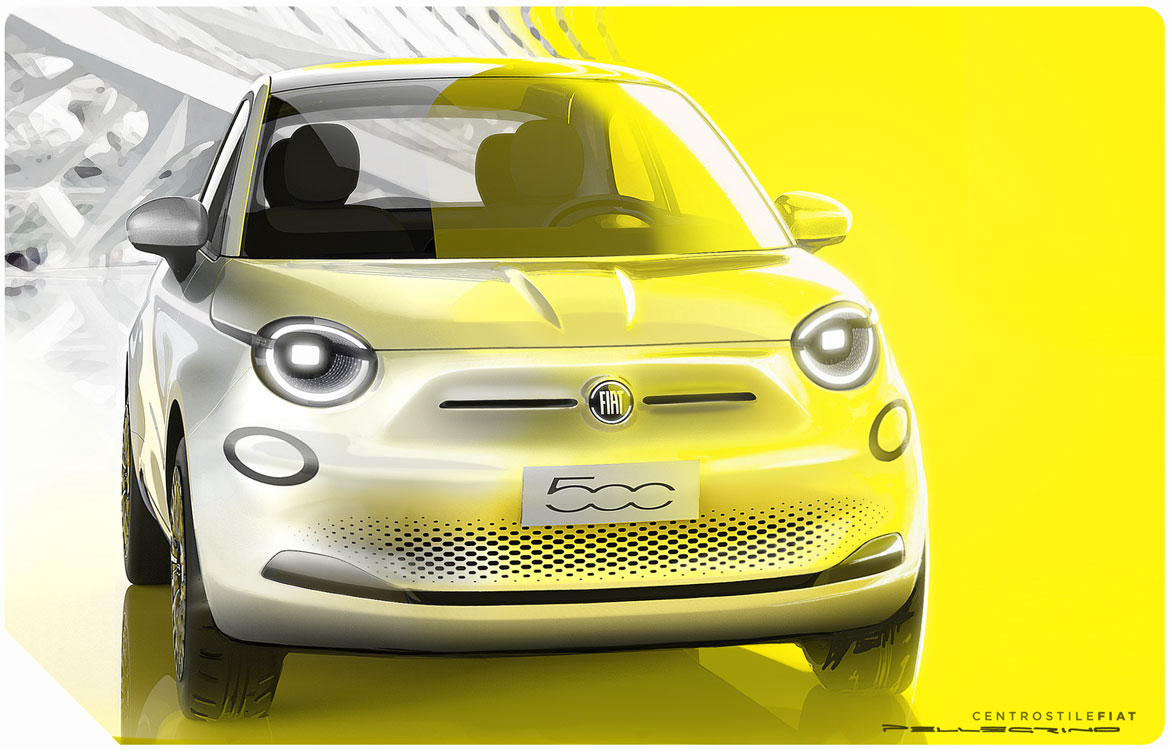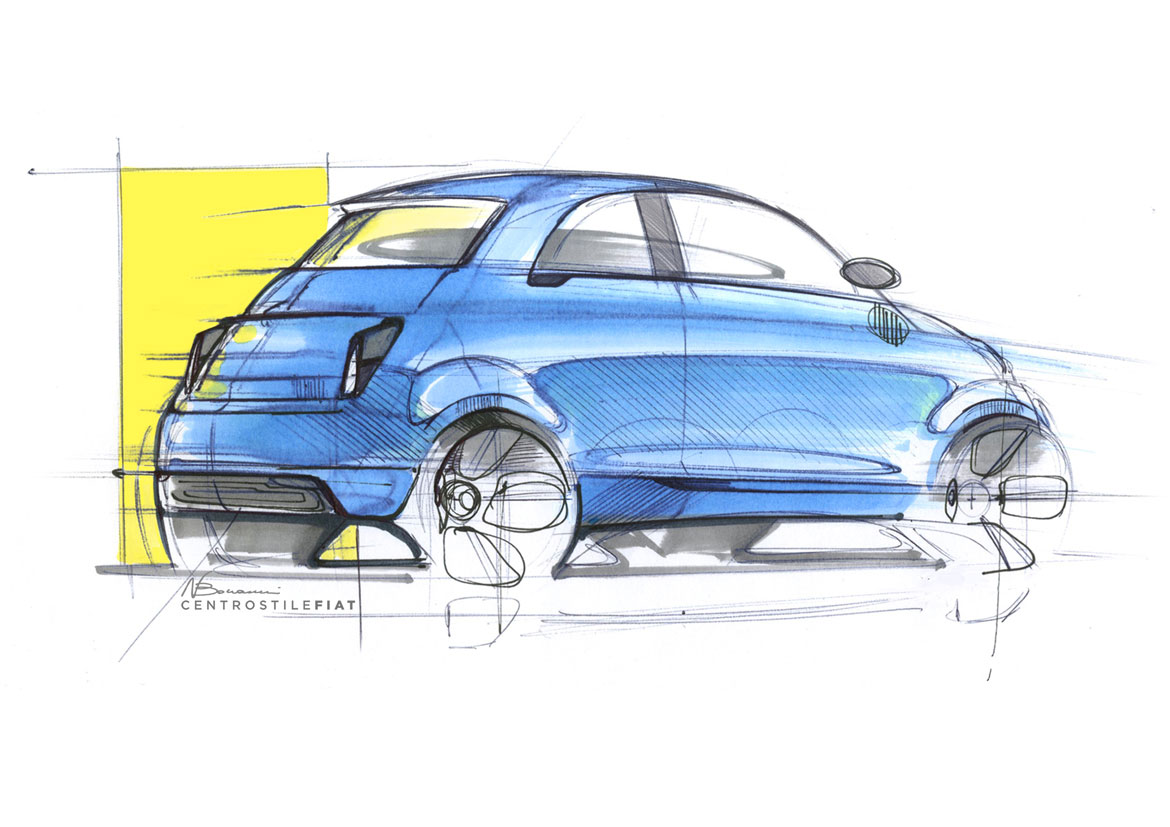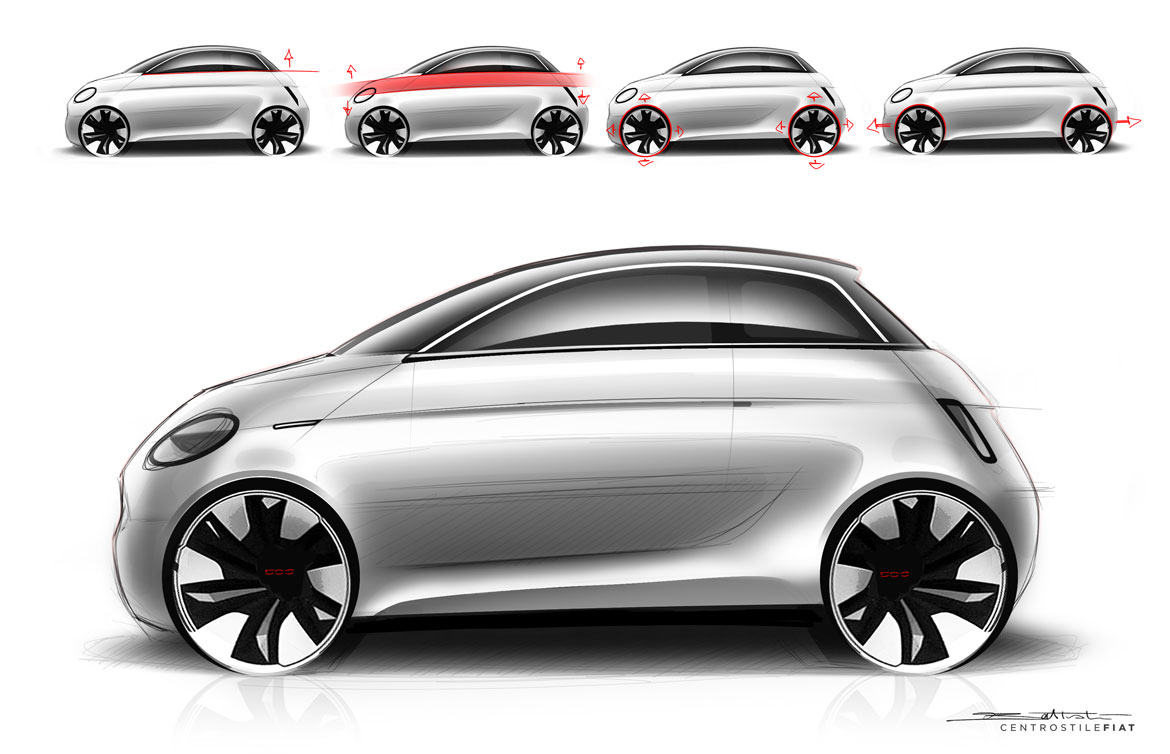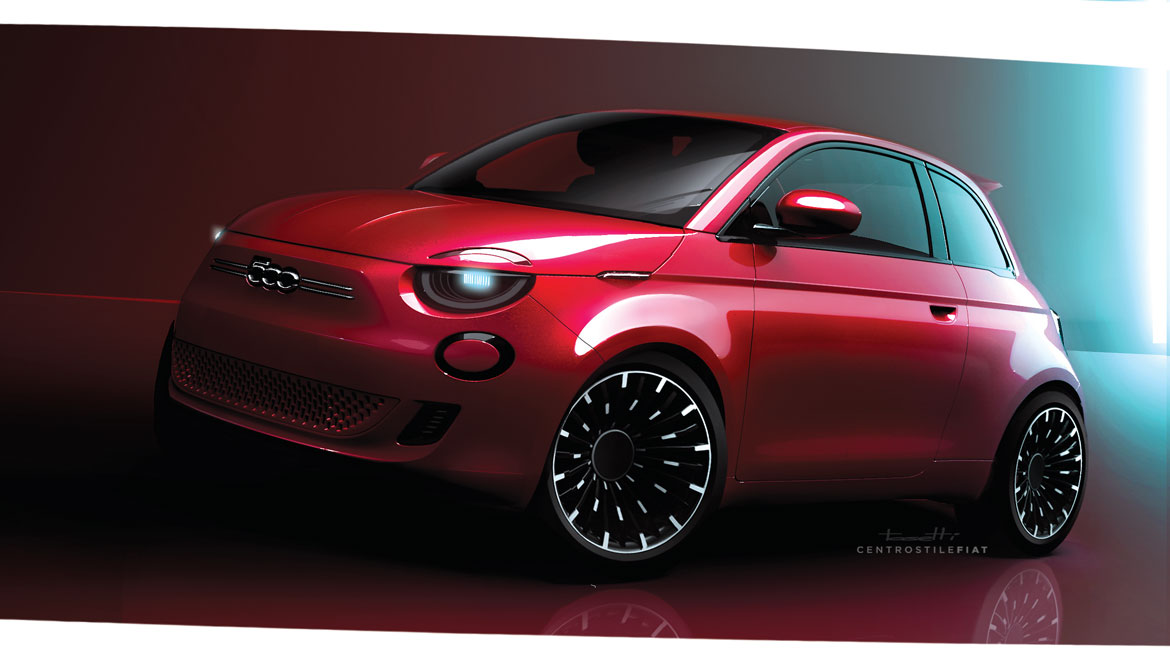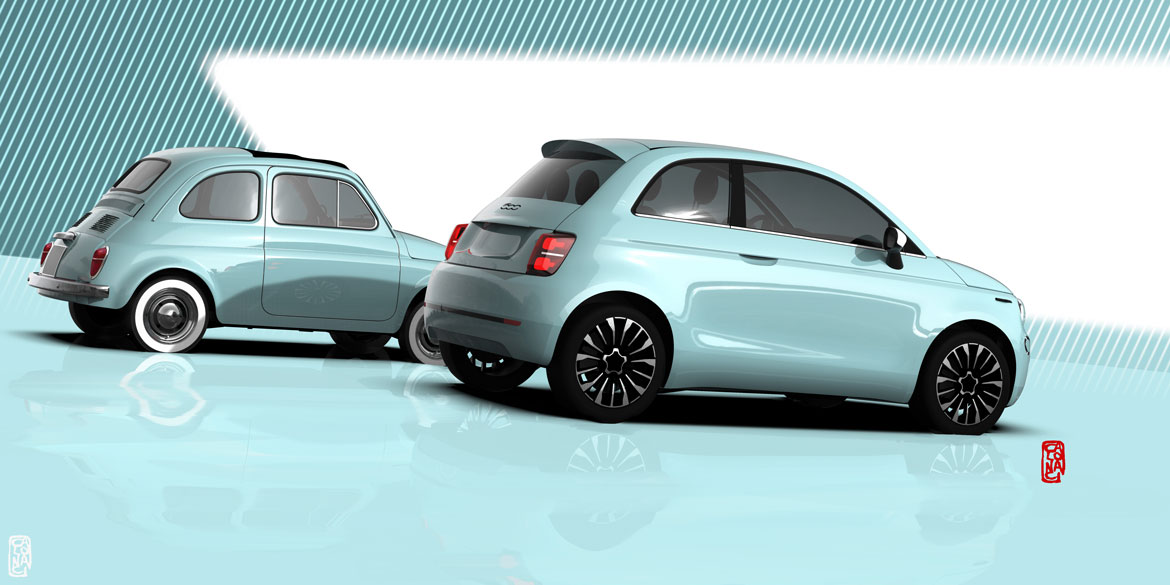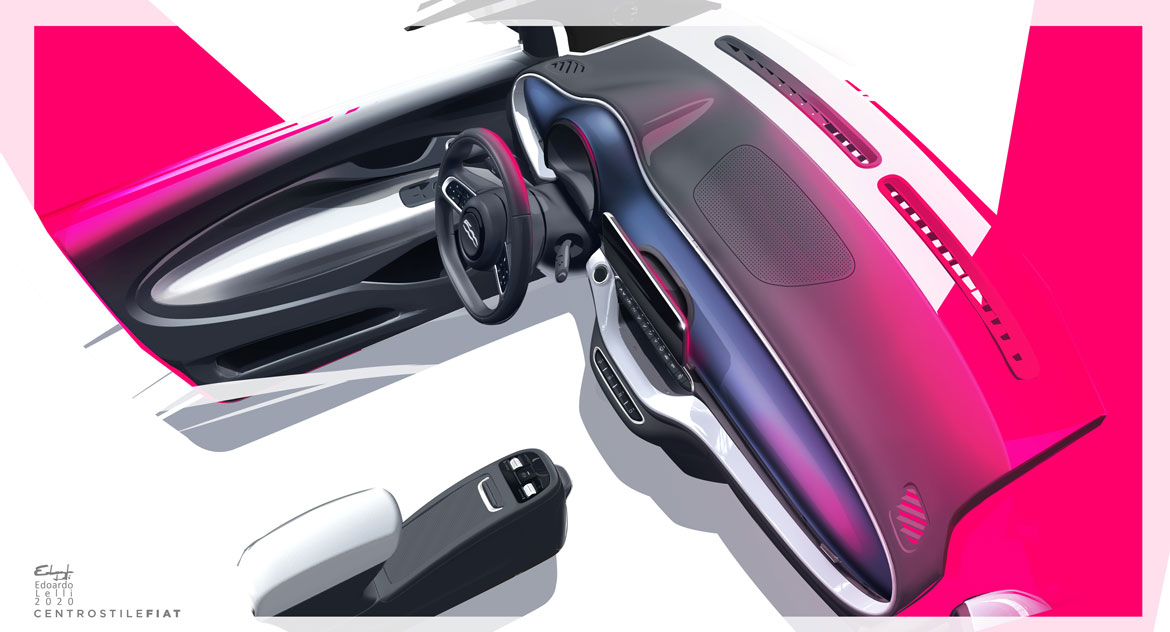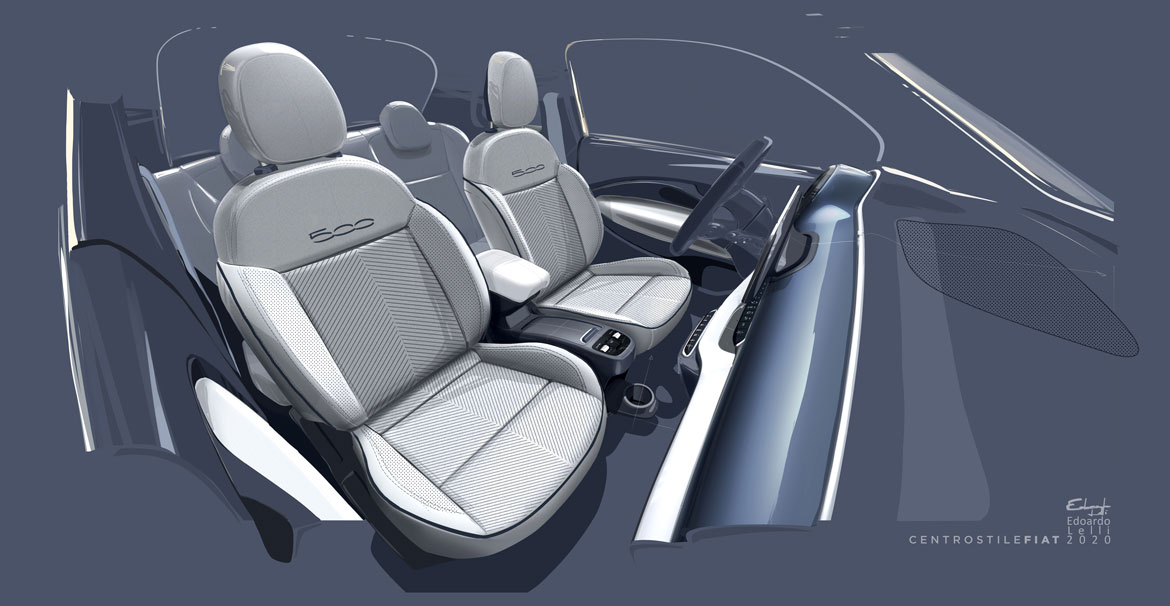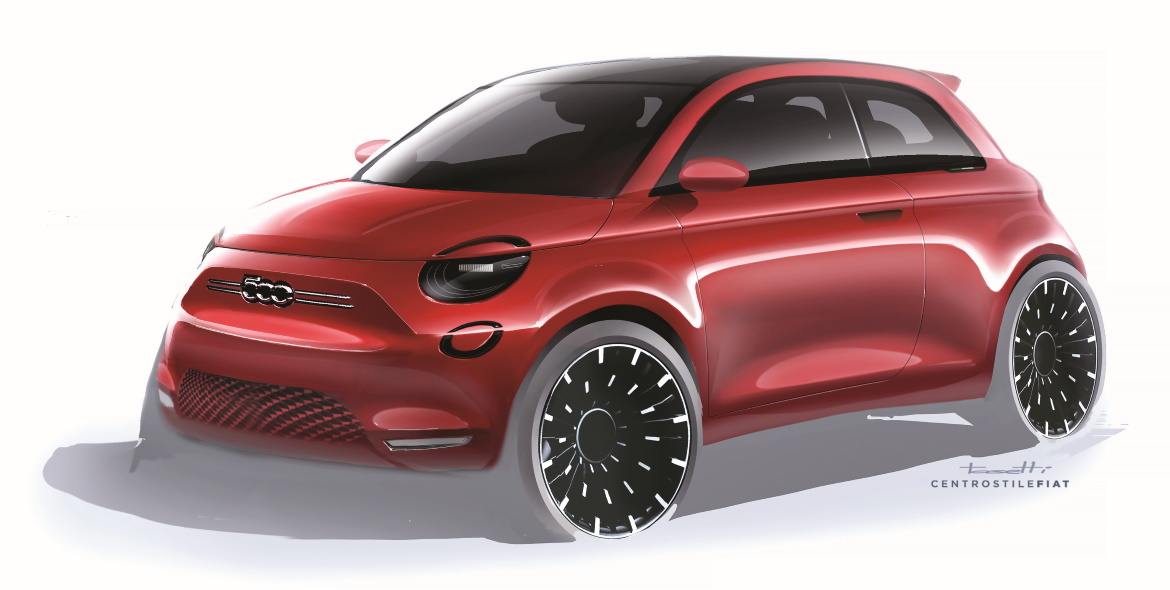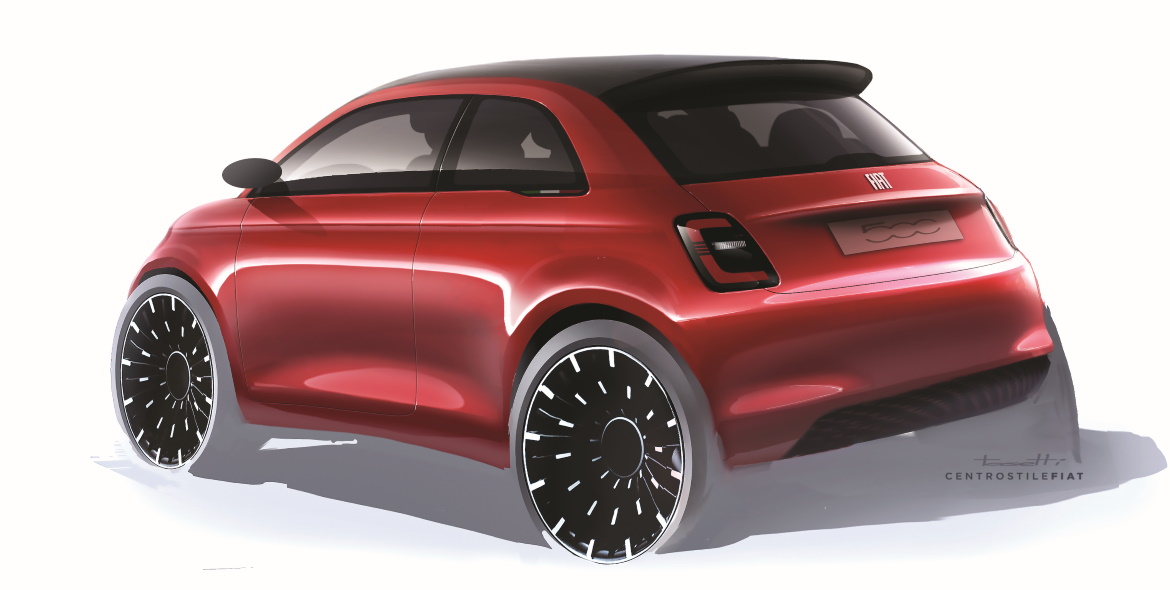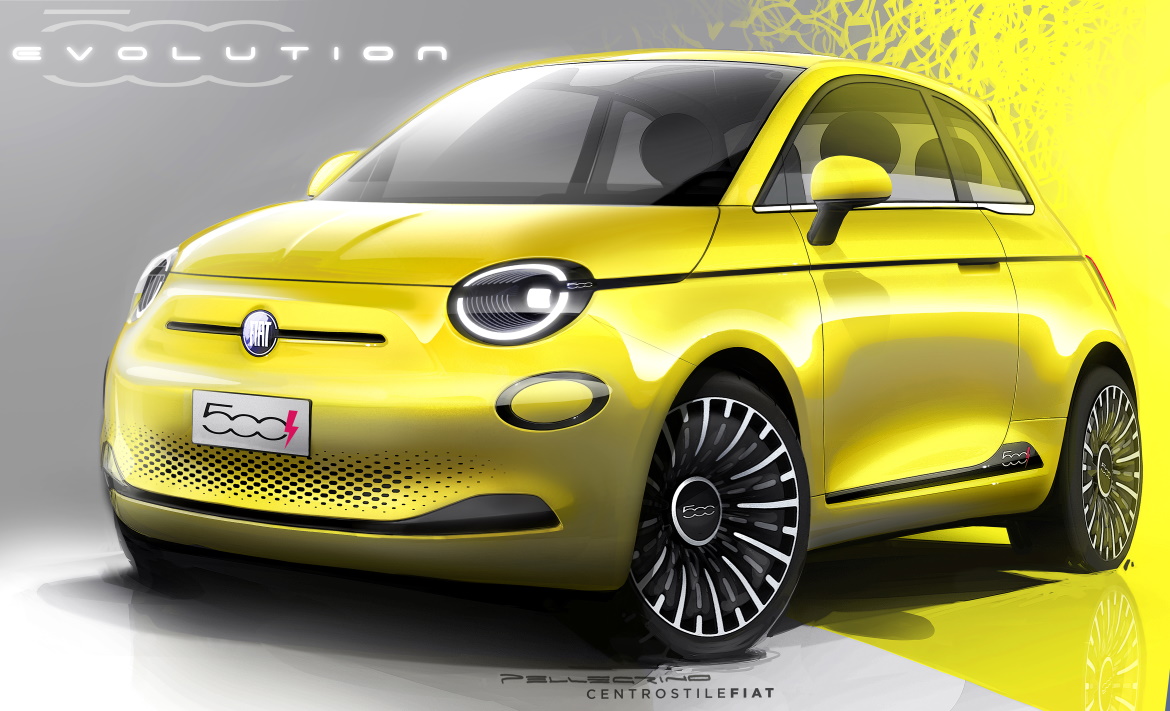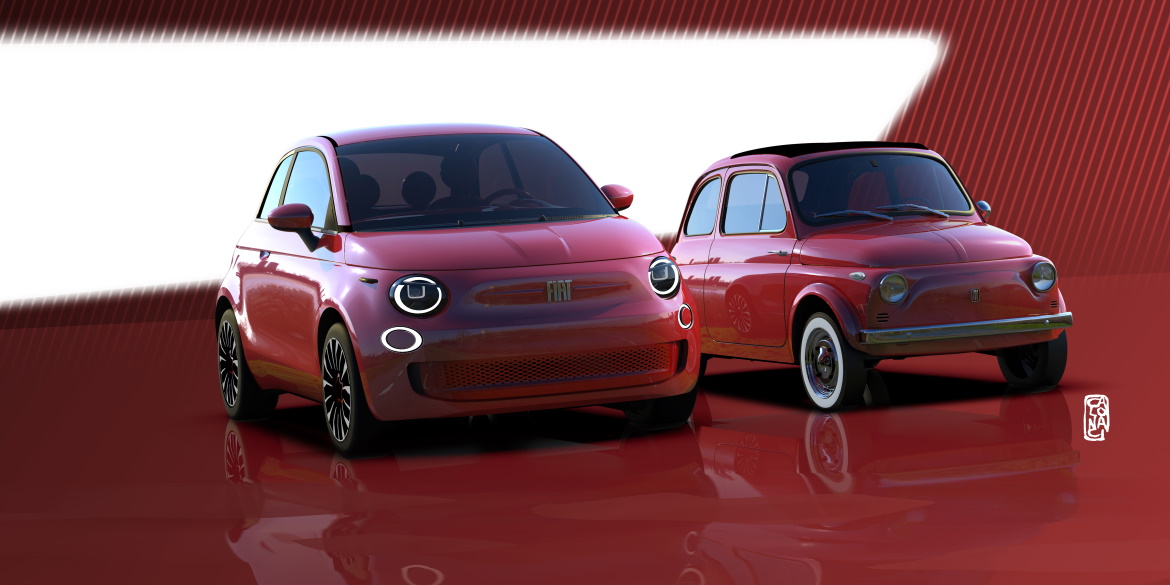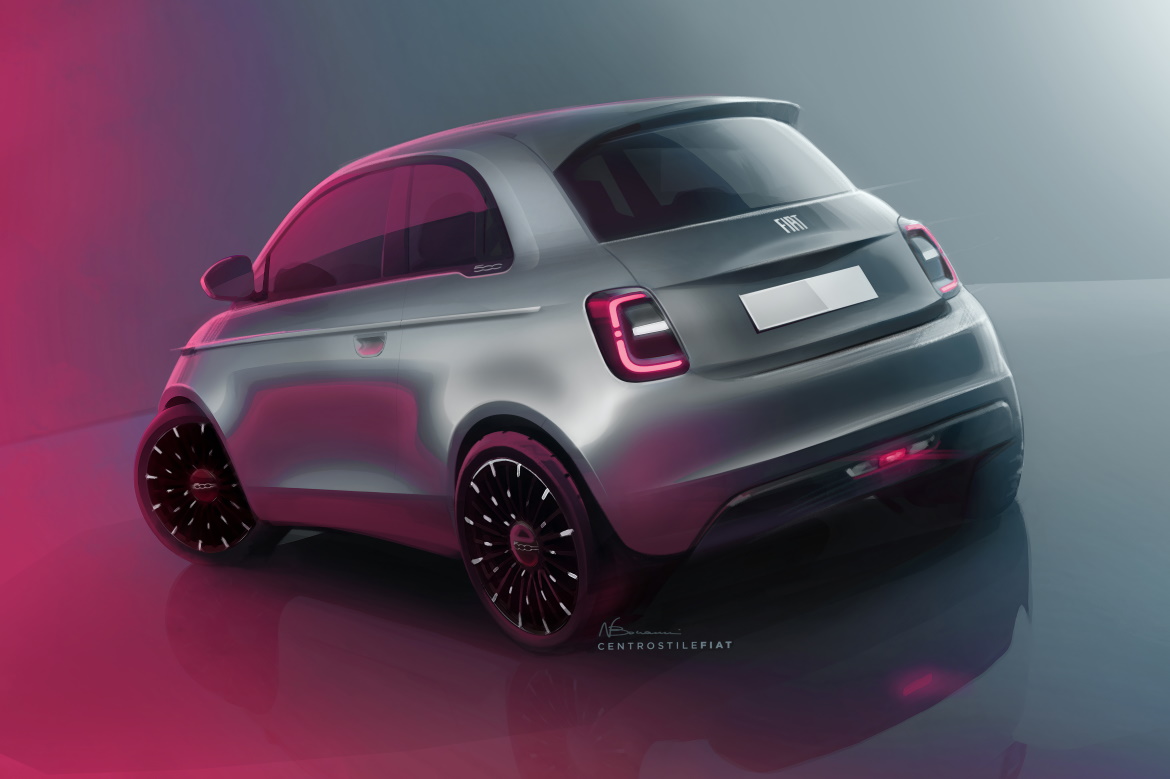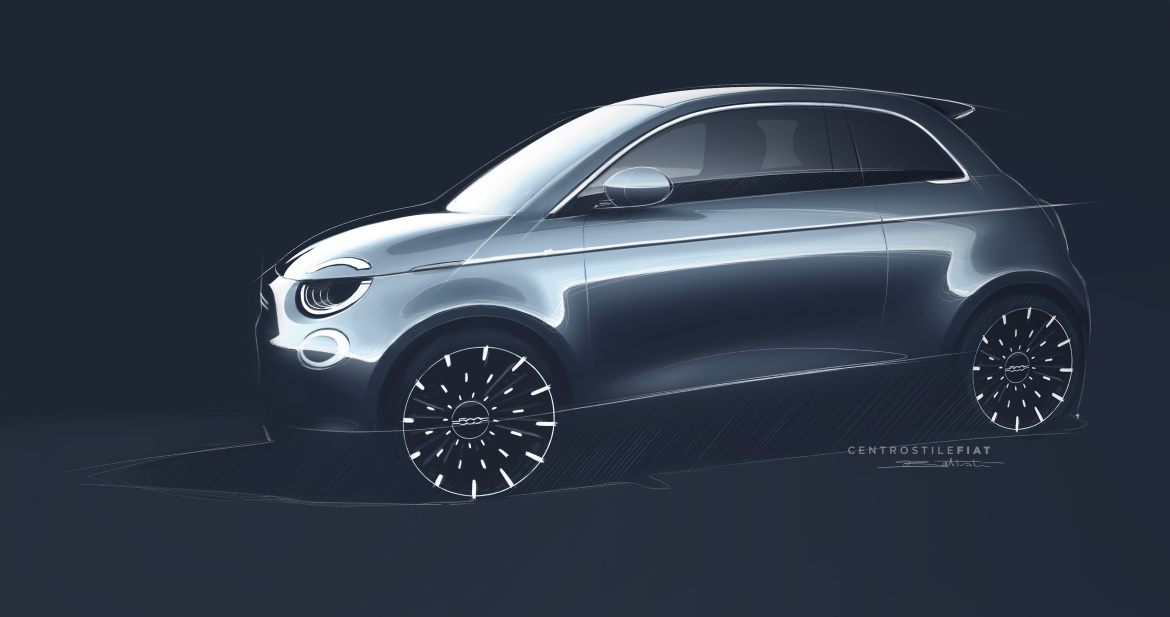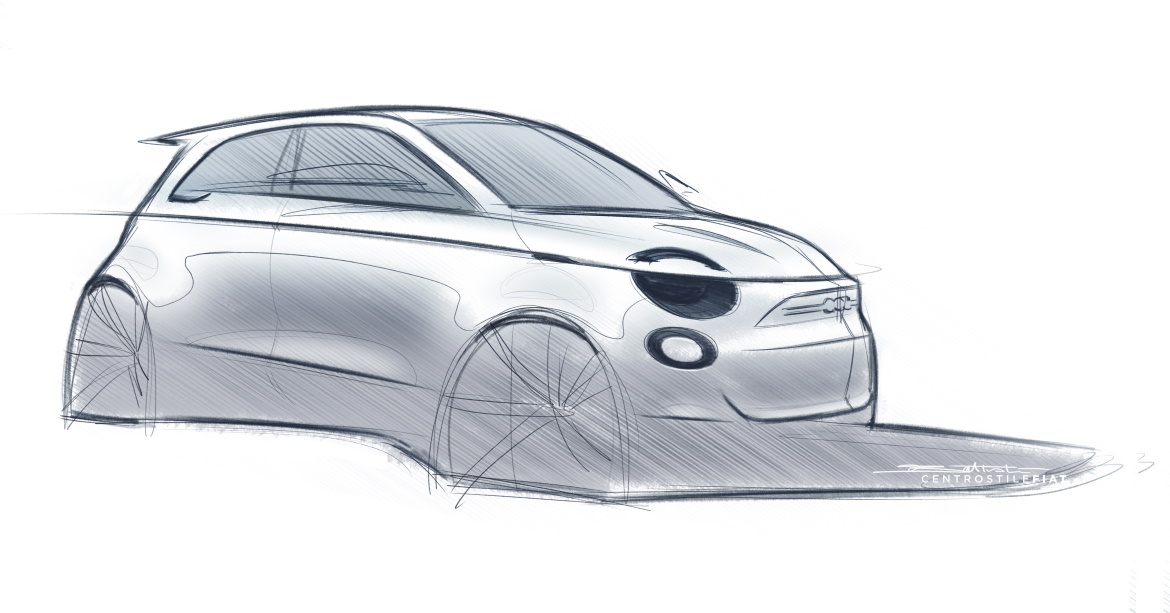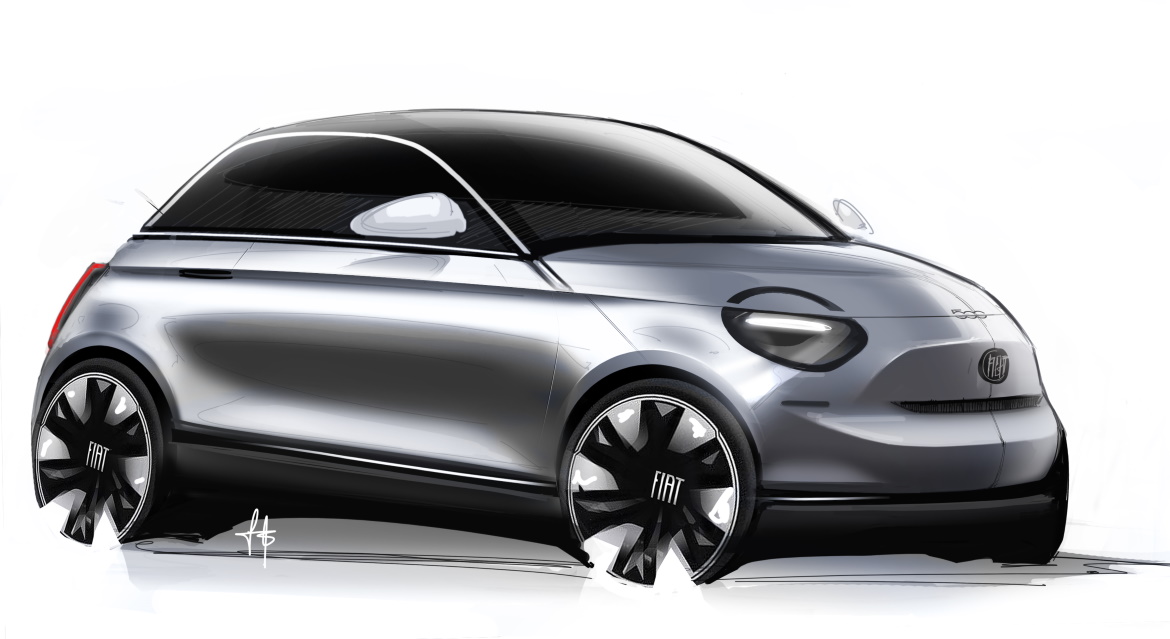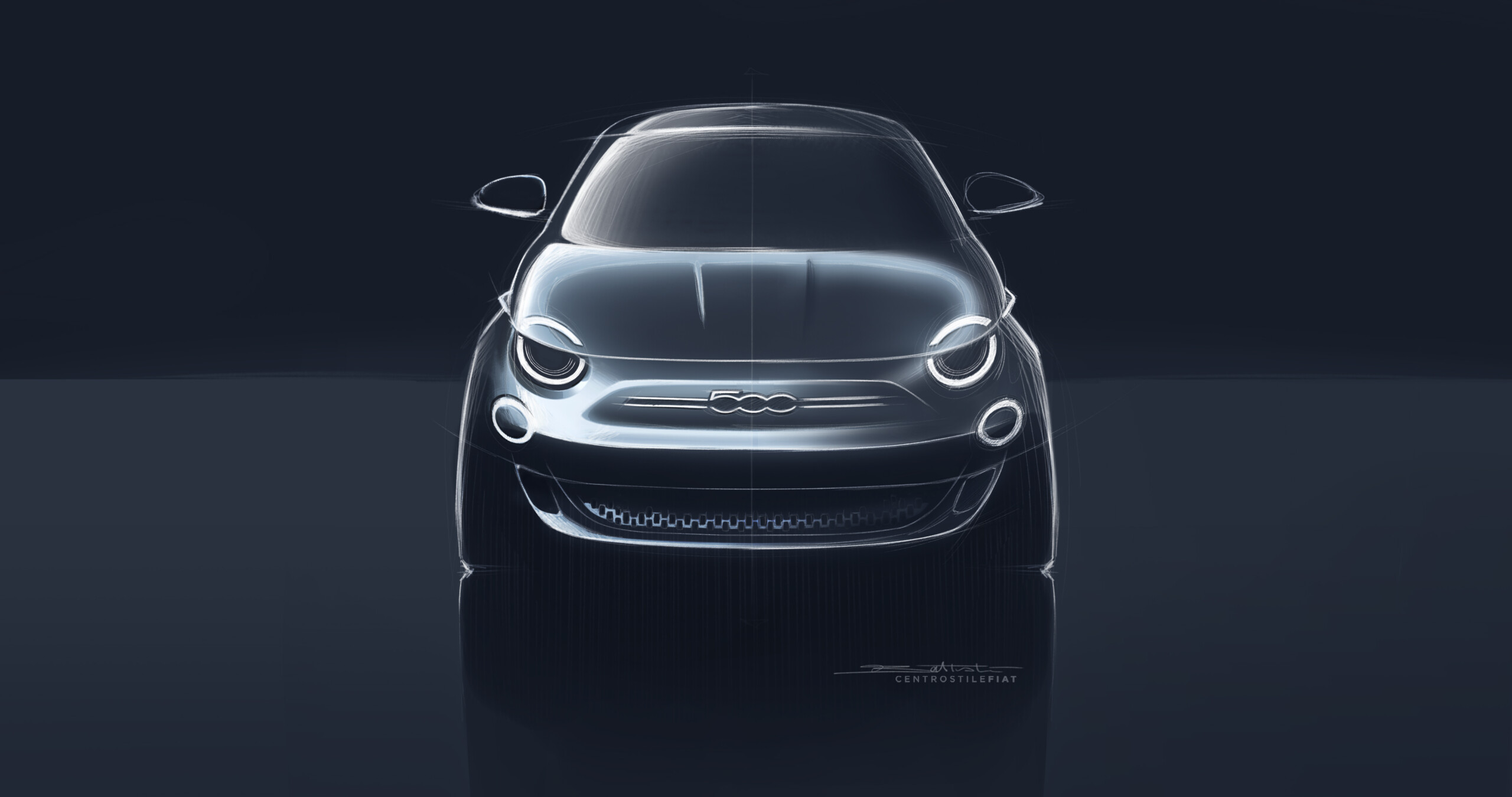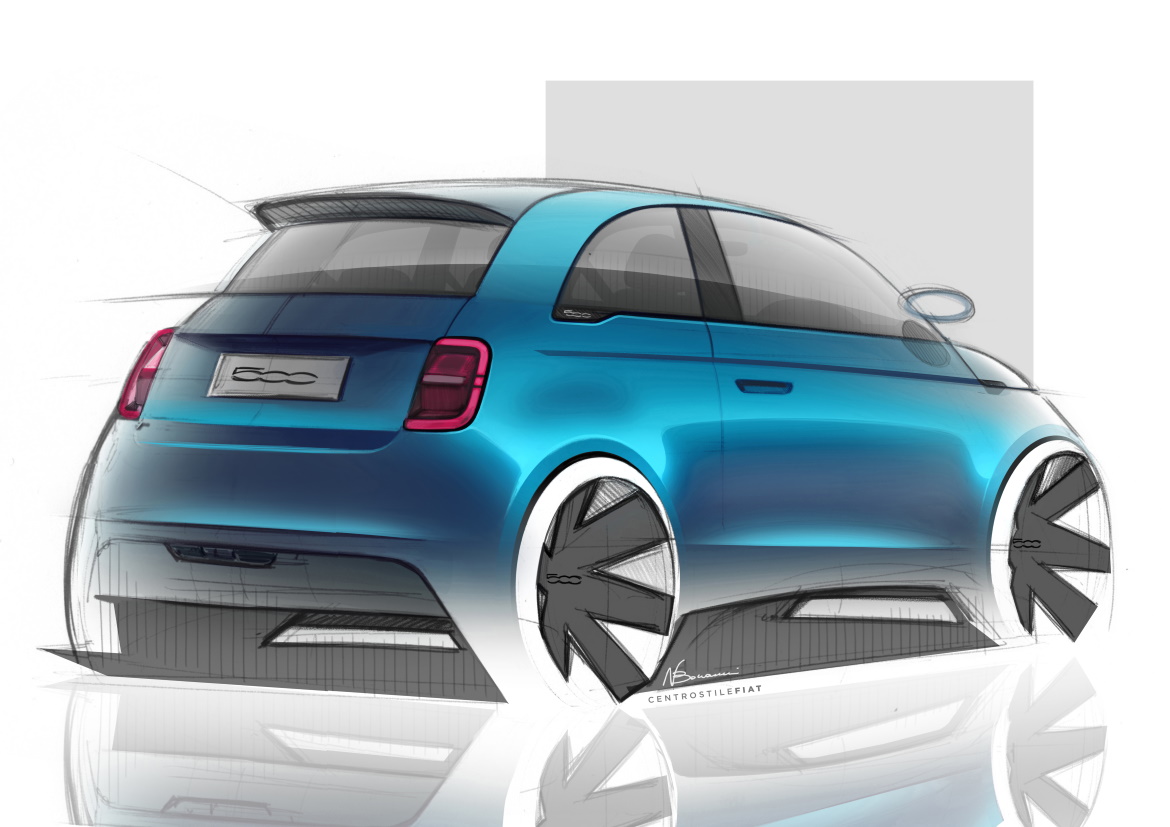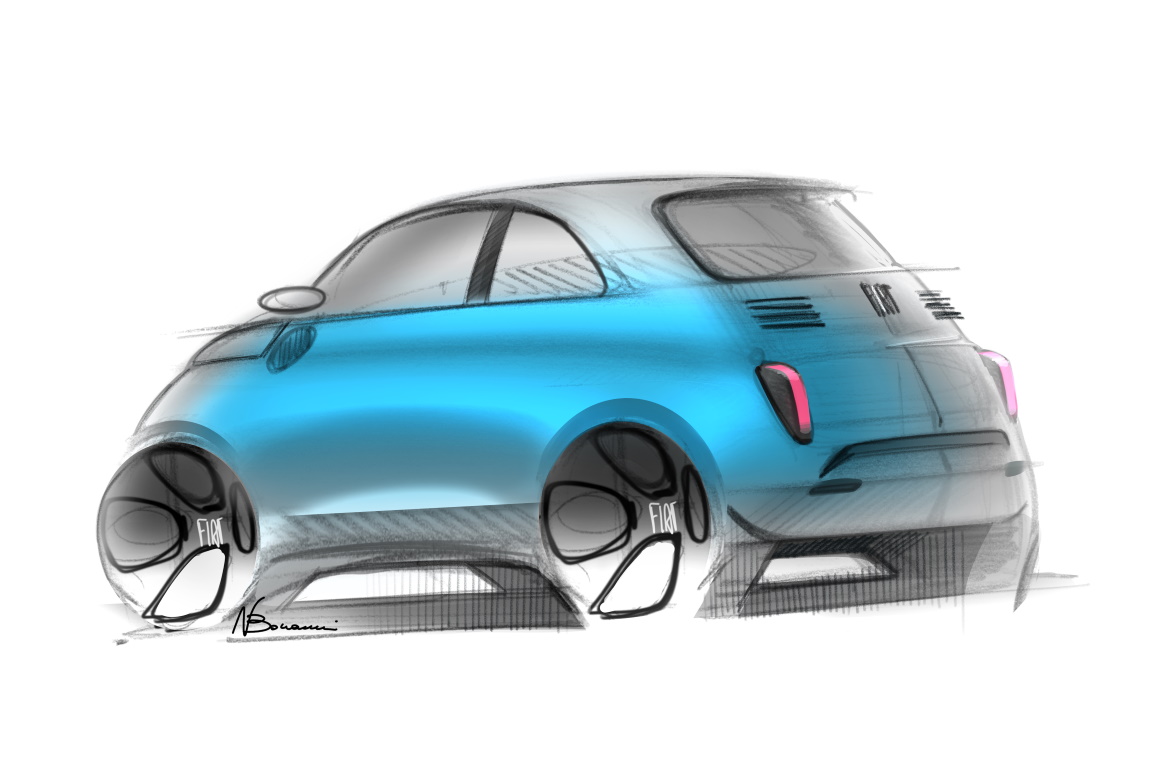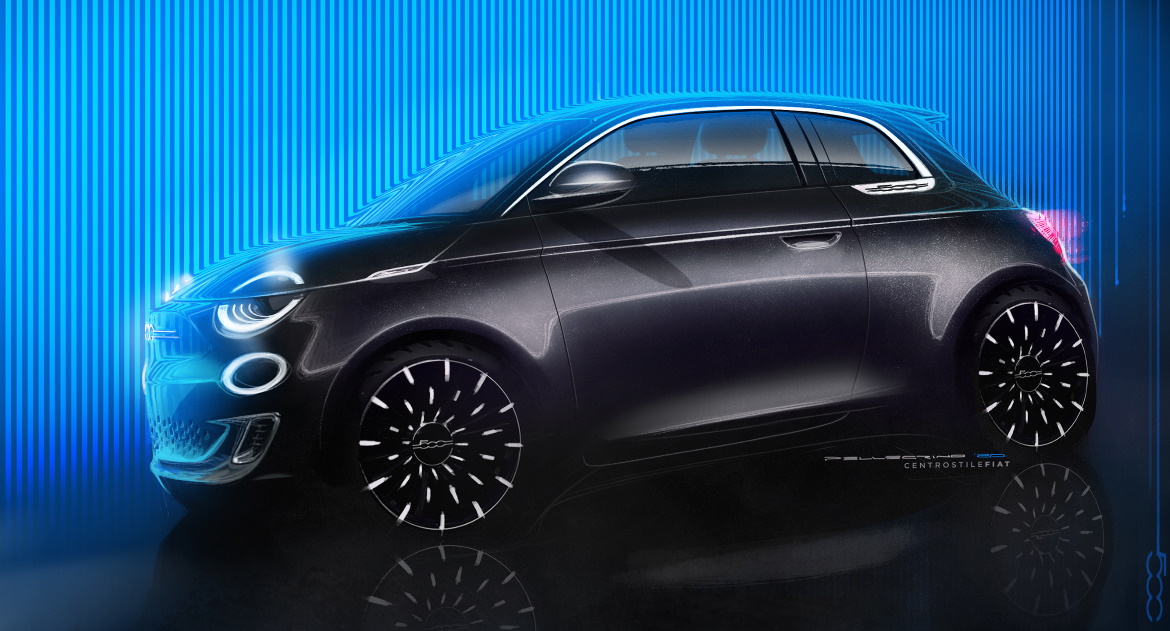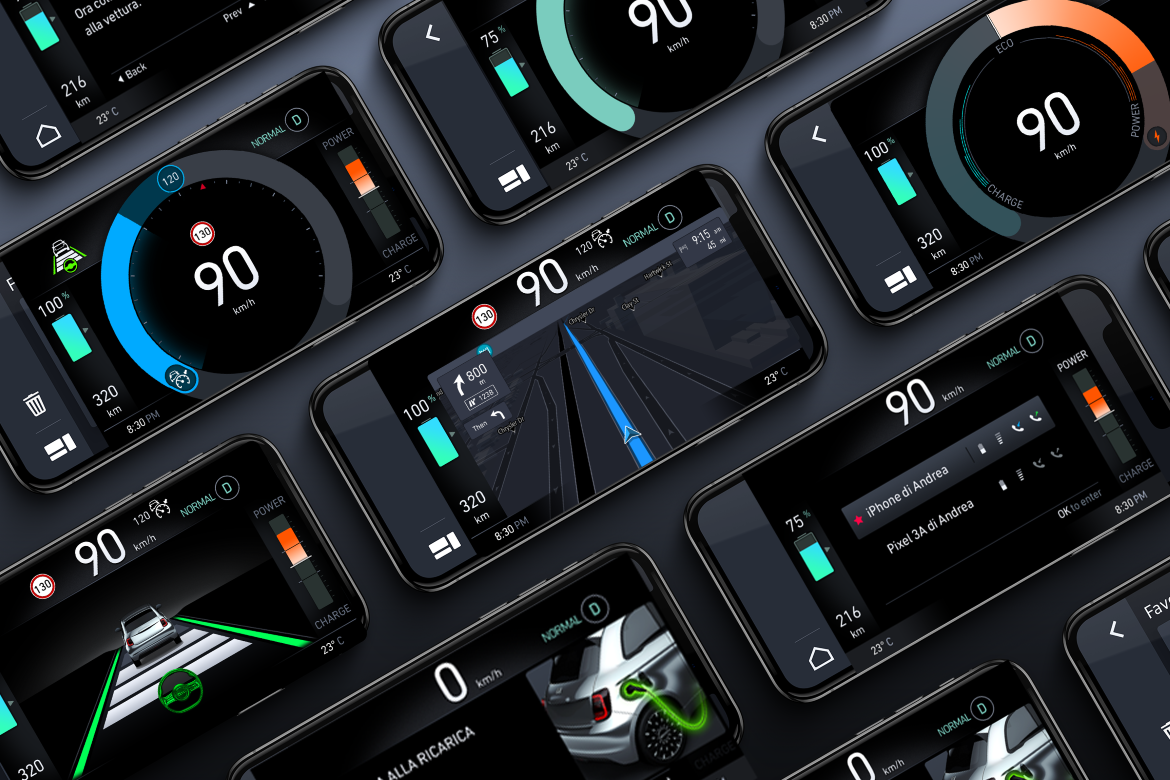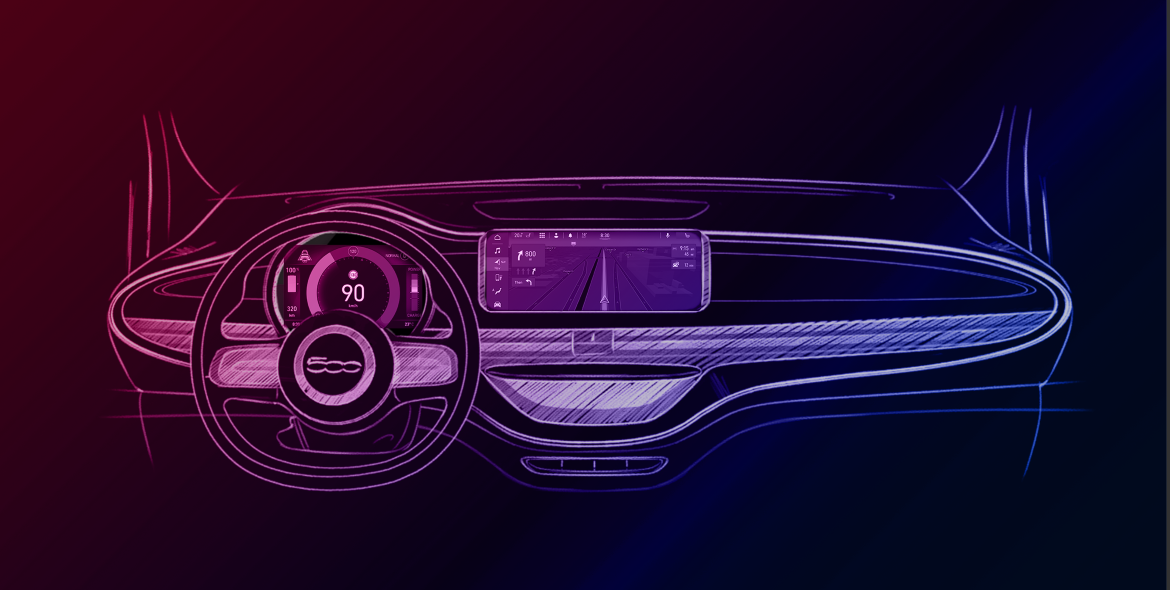There are design objects that symbolise an era. Iconic shapes that become an aesthetic reference point for the future, as long as they avoid nostalgic evocations. This is an endeavour in which the Fiat designers have succeeded with the New 500. “This model was born in 1957, but we’re only at the third generation, each one representative of an era”, explains Klaus Busse, Head of design FCA EMEA.
Back to the origins
It’s a complete change in pace in which the 500 does not lose, but in fact strengthens, its identity, which is moulded on the basis of a new platform solely dedicated to battery power supply. “The 500 of 1957 had a rear engine, so the front end didn’t need a radiator. In 2007, the engine was in front, but the designers understood the importance of that iconic face and did an excellent job with the engineers to minimise the openings and position them down low. Today, the public associates the “closed” front end with electrification: for us, it’s all about a return to origins”, emphasises Busse.
Configuring the proportions
Once the stylistic concepts were identified, they moved on to configuring almost all the proportions. “Thanks to the new floor, we have been able to work on the size impression, increasing the tracks and, thus, the shoulder space on board. It is an assertive 500, with a decisive presence and a more masculine tension, as envisaged in the briefing”, explains Alberto Dilillo, head of Fiat design. The final result, which is strongly contemporary, expresses a bodywork composed of bracing volumes and shapes constructed around alternating clean and sinuous shapes. It is a wise mix of proportions and a few, highly polished identifying elements, such as the expressive, high-tech headlights, divided at the bonnet by the beauty line that continues along the sides, aligning the indicator flush with the door handle, before connecting to the tail lights.
Iconic interior
For the interiors too, the aim was also to simplify, explains Andreas Wuppinger, who was one of the creators of the second generation 500 and is now head of interior design for FCA EMEA. “It’s one of the few vehicles that is also iconic in terms of its interiors. Because of this, we wanted to keep some significant elements, for example, the round instrumentation”. The second theme was digitalisation: “Paired with the size of the electric vehicle, it allowed us to liberate spaces, making them more liveable. Thanks to the compact electric gearstick, the dashboard is wider, offering perceptibly more transverse space,
Advanced infotainment
The idea of simplifying was also extended to the latest generation infotainment (to which Auto&Design will dedicate an exploration in the next few issues), essential for a car imagined for the future and, because of this, “the most advanced at the time in terms of technology for an FCA group car”, Peter Jansen (UX Design Manager), emphasises. “We kept the circular form of the instrumentation, just like on the original 500, but now the display is digital, with more modern, intuitive graphics”, Jansen continues. A big, 10.25-inch central screen, with blunted angles, positioned at the centre of the dashboard, is added.
Inspiration from the pop world
The pop world also inspired the choice, for some versions, of colours and materials. “We began with a journey through time, analysing the most representative design objects, from La Dolce Vita to today”, recounts Rossella Guasco, head of Color&Trim for FCA group EMEA. The team chose three themes for the outfitting: “Proactive”, the entry level version with rational graphics paired with fabric with Sequel yarn derived from recycled plastic found in the sea; “Immersive”, more trendy with fabrics that adopt a pinstripe design and different chrome plating; and the “Opening Edition”, “elegant, distinguished by its premium nature”. The showpieces are, finally, the three one-offs, exclusive interpretations of the new 500 signed by Armani, Bulgari, and Kartell, three companies that best represent Made in Italy: “Iconic, sustainable, and projected into the future. Just like this new 500”.
Texts by Silvia Baruffaldi and Edoardo Nastri
(Full article in A&D no. 243)

